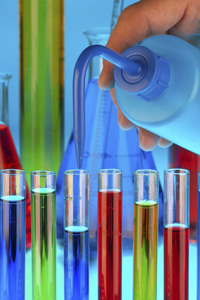The TOP trial for the final ACGT Demonstration
 The ultimate objective of the ACGT project is the provision of a unified technological infrastructure which will facilitate the seamless and secure access and analysis of multi-level clinical and genomic data enriched with high-performing knowledge discovery operations and services, in the concrete setting of clinical trials on Cancer. Pilot trials have been selected based on the presence of clear research objectives, raising the need to integrate data at all levels of the human being. This integrative view underlies the development of clinico-genomic models, showing that the combination of biomarkers and clinical factors are most relevant in terms of statistical fit and also, more practically, in terms of cross-validation predictive accuracy
The ultimate objective of the ACGT project is the provision of a unified technological infrastructure which will facilitate the seamless and secure access and analysis of multi-level clinical and genomic data enriched with high-performing knowledge discovery operations and services, in the concrete setting of clinical trials on Cancer. Pilot trials have been selected based on the presence of clear research objectives, raising the need to integrate data at all levels of the human being. This integrative view underlies the development of clinico-genomic models, showing that the combination of biomarkers and clinical factors are most relevant in terms of statistical fit and also, more practically, in terms of cross-validation predictive accuracy
The TOP trial, a trial which aims at identifying molecular markers that predict response/resistance to one of the most commonly administered chemotherapies in breast cancer, is one of those pilot trials for ACGT and has been chosen for the final demonstration of ACGT.
To date very little progress has been achieved in the field of biomarkers predictive of chemotherapy benefit in breast cancer. Consequently, the vast majority of patients considered to be at moderate or high risk of relapse are treated with the cytotoxic agents viewed as the most active “on average”, namely anthracyclines and taxanes chemotherapy agents. These drugs have significant side effects, the most worrisome of which are secondary leukemias and irreversible congestive heart failure for anthracyclines, and slowly reversible neurotoxicity for the taxanes.
In the pre-operative international TOP trial presented here, we focus on identifying molecular markers that predict response/resistance to anthracyclines, one of the most commonly administered chemotherapies in breast cancer.
Interestingly, the TOP trial avoided any possible confusion by including only women being treated with single-agent epirubicin. We also limited the patient population to women whose tumours did not over-express the estrogen receptor (ER). This is because, for these women, chemotherapy can stop the ovaries from working, offering an additional benefit that may distort the results.
The aim of the trial was to carry out the first prospective evaluation of the predictive value of topoisomerase II alpha (TOP2A) gene aberrations and expression. TOP2A is a key enzyme in DNA replication, one of the molecular targets of anthracyclines, and it is amplified in 24% to 54% of HER2-amplified tumors. Although TOP2A is considered by some investigators to be a promising marker for predicting the activity of anthracycline-based regimens, inconsistent results have been reported about TOP2A amplification/expression and response to anthracyclines.
The study protocol also included exploratory analysis to identify gene expression signatures that correlate with pCR. We therefore aimed to develop a gene expression signature to identify those patients who would not benefit from anthracyclines and could therefore be spared the non-negligible risks of this type of chemotherapy.
For the final demonstration of ACGT, it has been decided to use the TOP trial to illustrate several, but not all, procedures and tools set up during the ACGT project. This demonstration has been designed as a step by step process simulating how the TOP trial data is introduced and analyzed in the ACGT infrastructure to identify the targeted biomarkers.
In practice, we will first describe and illustrate the legal framework which is necessary to take into account the needs of modern scientific genetic research and the needs of the patients regarding data protection and privacy. This legal framework specifically involves the informed consent procedure which was carried out in the TOP trial, the collaborative contracts which had to be developed and agreed by the data providers and data users, and the anonymization of the patient data.
Second, we will illustrate the importance of the ACGT Master Ontology for the semantic integration of heterogeneous data (clinical, imaging, genomic, proteomic, …).
Third, we will demonstrate how tools developed within ACGT can facilitate the identification of predictive markers of response/resistance for anthracyclines chemotherapy using microarray-based gene expression profiling as well as genotyping technology.
Fourth, we will report the progresses and advances made by the in silico oncology working group. This group evaluates the reliability of in silico modelling as a tool for assessing alternative cancer treatment strategies; especially in the case of combining and utilizing mixed clinical, imaging and genomic/genetic information and data.
Since, until now, we were lacking patients’ views on and experience of involvement in clinico-genomic research, Grid structures, and Europe-wide data flows, we will finish by reporting the results of the large empirical survey, carried out within ACGT, on perspectives and needs of persons who did consent to take part in tissue-based cancer research in several European settings.
Christine Desmedt, IJB

